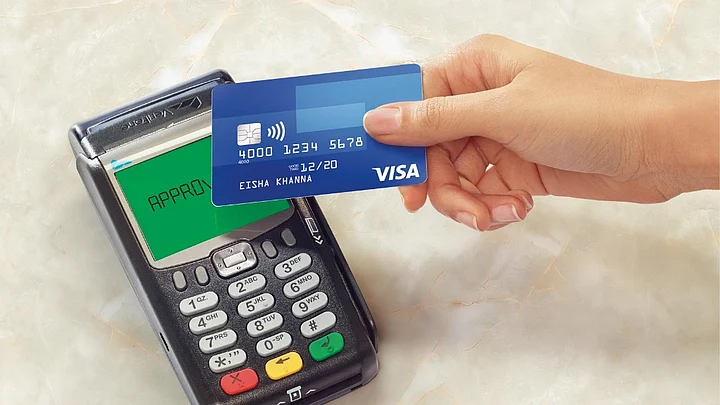Contactless debit cards have become popular in many parts of the world, and even though India got this technology two years ago, consumers haven’t really warmed up to it. However, the likes of Visa and Mastercard are at the forefront of changing this scenario, with experts confident that NFC-based card payments are the future.
It’s not like there’s dearth of places where you can pay with these cards, but the basic issue is educating the customer, and also the seller as often both aren’t aware of the feature.
Too caught up to read? You can listen to this story instead
Back in 2017, we got a chance to see what Mastercard was doing in the contactless payment domain, but Visa has bided time before making its presence felt, even though they’ve had a product since 2015.
Which is why, you’re looking at a market with a miniscule number contactless cards been issued in the country with more than 1.3 billion people.
Encouraged by the Ministry of Finance (MoF), Visa believes that it’s time banks in India saw contactless cards as a viable avenue for growth of digital payments. The MoF has advised banks in India to consider issuing contactless cards from end of 2018.
Visa has been doing its best to market the technology and show its effectiveness with its own set of products. It believes India’s time for contactless card (CC) payments has arrived.
A large number people are expected to be issued contactless cards in the country very soon.Murali Nair, Head - Client Relationship Management, Visa India
Nair expects these cards to be initially used at supermarkets and outlets like Subway, Dominos and other fast-food chains. This is where the early adoption of contactless cards tend to happen.
Markets like Australia, New Zealand, Taiwan and Singapore do over 50 percent transactions with contactless cards. They also took two to three years to build and started off from these places only.Murali Nair, Head - Client Relationship Management, Visa India
Currently, the penetration of contactless cards in India has been pegged at 15 million, with Visa carrying bulk of the space with 10 million cards issued. These figures pale in front of the market, where over 900 million debit cards are in use.
But Nair is confident that within two years, India will have more takers for these cards. It helps that post-demonetisation, people are more open to digital payment modes.
With contactless cards, people can forget about carrying money in wallets and have a greater control over the payment process.
In contactless card payment, the card is not meant to leave the hand of the consumer, he just needs to tap on the terminal and it’s done.Murali Nair, Head - Client Relationship Management, Visa India
This also reduces your time standing in a queue, thereby easing up traffic in malls or supermarkets. Speaking of acceptance, Nair says that over 900,000 terminals already support NFC-based card payments. People just need to get a card that supports these features.
Are these cards going to cost a lot? “Not more than Rs 25 to 30 compared to a regular chip-based card,” he says.
How Does it Work And Is it Safe?
Near field communication of NFC is the backend system that lets you make contactless card payments. You get a card (with a wireless symbol) and tap it on a point of sale (POS) terminal to approve the payment.
For purchases less than Rs 2,000 the Reserve Bank of India (RBI) has exempted using two-factor authentication ie PIN or biometrics fingerprint.
Contactless cards use NFC. Two devices communicate with each other. There is an antenna in the contactless card, which transmits encrypted (256-bit) data. It is protected via a digital signature, making it secure.Murali Nair, Head - Client Relationship Management, Visa India
But what about the myriad videos of NFC-cards getting cloned and people stealing money in no time? Nair had sensed this question would come and with a straight face he said it’s not an easy thing to do.
For a person to use a POS terminal to steal money from your pocket, it’s not an easy thing to do. First of all, he needs to be a merchant to get access to the device, for which he will be verified.Murali Nair, Head - Client Relationship Management, Visa India
Most people tend to carry multiple cards with them these days, which ensures that scanning is not possible, as the path to the NFC-enabled card is blocked. Having said that, like every technology out there, nothing is 100 percent safe.
With over 900 million debit cards and 35 million credit cards already in use in India, it’s not as if the country is alien to using cards for payment.
Visa and other payment entities are hoping that by offering special discounts and offers for using contactless cards for payment, people will slowly but surely sign up for the technology.
(At The Quint, we question everything. Play an active role in shaping our journalism by becoming a member today.)
